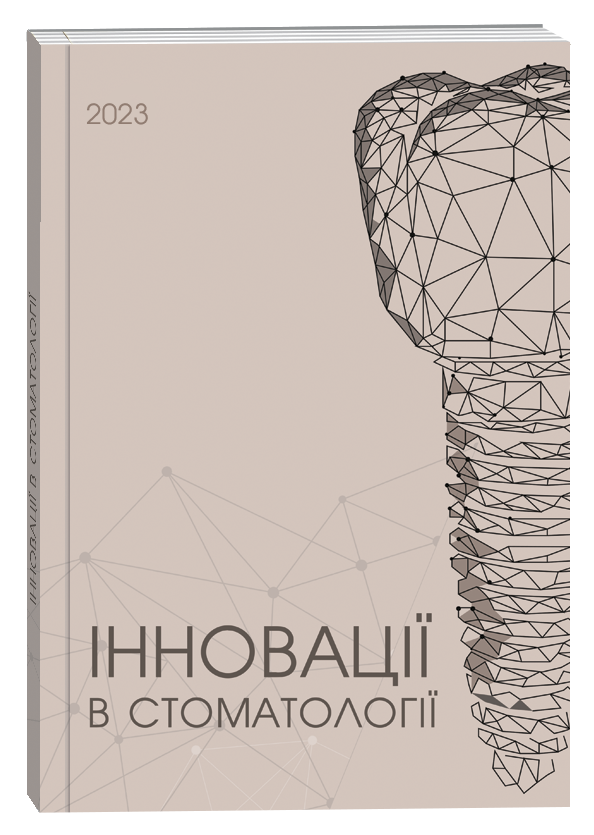PREVALENCE OF ORTHODONTIC BITE AMONG SCHOOLCHILDREN IN UZHGOROD
DOI:
https://doi.org/10.35220/2523-420X/2024.2.12Keywords:
incorrect bite; schoolchildren, prevalenceAbstract
The aim of the study – to find out the prevalence and types of malocclusion in schoolchildren. Research methods. 842 examinations of students of secondary schools and lyceums in Uzhhorod were conducted, 427 boys (50.7%) and 415 girls (49.3%); the ratio between boys and girls was approximately equal. The study was conducted during 2022–2024. We obtained the data from the “Medical card of an orthodontic patient” during systematic dental examinations of schoolchildren, which are carried out once a year. The study covered almost all secondary schools and lyceums in Uzhhorod. The results summarized in a Microsoft Excel spreadsheet/ google spreadsheet were exported to licensed software for the Windows operating system and the standard Statsoft software package. Inc STATISTICA 6.0 2300 East 14th Street Tulsa, OK 74104 USA and performed the statistical analysis. Categorical variables were evaluated using the chi-square test for statistical difference between sexes. Student’s t-test values were used to determine the reliability of the difference in results. Scientific novelty. Studying the prevalence and type of malocclusion in schoolchildren is of particular importance for planning preventive measures, providing medical and preventive, orthodontic care, conducting joint dispensary work with pediatricians, and implementing health-improving measures. Conclusions. The obtained results showed that the lowest percentage of malocclusion was found in the primary dentition. The highest percentage of malocclusion was found in 15-year-olds, about 50%. The largest number of children who underwent orthodontic treatment was found in 15-year-olds. Systematic reviews are a good source of prevalence information and a starting point for further planning. It is very important to establish closer cooperation between the general dentist and the specialist orthodontist. In this way, timely diagnosis and referral of children in need of orthodontic treatment can be achieved.
References
Голованова І.А., Ляхова Н.О. Медико-соціальне обґрунтування оптимізованої моделі надання ортодонтичної допомоги дитячому населенню на регіональному рівні. Економіка і право охорони здоров’я. 2018. № 2 (8). С. 11–16.
Заяць О.Р., Ожоган З.Р. Поширеність зубощелепних аномалій у дітей Івано-Франківської області. Сучасна стоматологія. 2020 № 1. С. 68–72.
Дорошенко С.І., Савонік С.М. Поширеність зубощелепних аномалій у дітей віком 4–17-ти років. Сучасна стоматологія. 2020. № 5. С. 70–73.
Мельник В.С., Горзов Л.Ф. Поширеність і структура зубощелепних аномалій у дітей початкових класів м. Ужгорода. Український стоматологічний альманах. 2019. № 2. С. 29–33.
Смаглюк Л.В., Куліш Н.В., Нестеренко О.М. Міждисциплінарний підхід у лікуванні пацієнтів із зубощелепними аномаліями. Український стоматологічний альманах. 2022. № 2. С. 28–33. DOI https://doi.org/10.31718/2409-0255.2.2022.05.
Костенко Є.Я., Мельник В.С. Поширеність та структура зубощелепних аномалій у дітей Закарпатської області. Науковий вісник Ужгородського університету» серія «Медицина». 2016. Випуск 1(53). С. 102–105. URL: http://nbuv.gov.ua/UJRN/UNUMED_2016_1_22
Каськова Л.Ф., Марченко К.В., Бережна О.Е. Поширеність зубощелепних аномалій у дітей з урахуванням шкідливих звичок та відношення до ортодонтичного лікування. Актуальні проблеми сучасної медицини. Вісник української медичної стоматологічної академії. 2015.Т. 15, Випуск 1(49). С. 17–20.
Грузєва Т.С, редактор. Біостатистика. Вінниця: Нова книга; 2020. 384 с.







